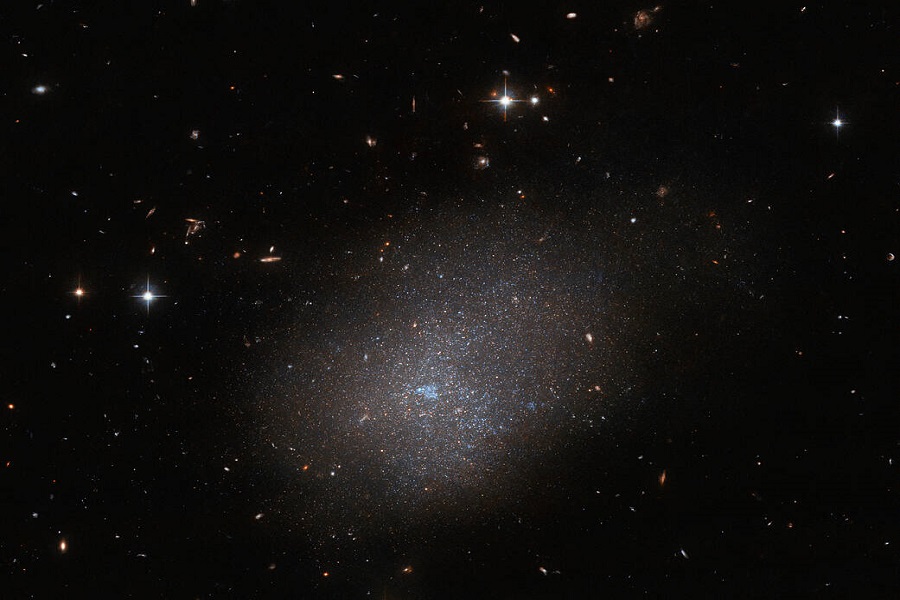Hubble Space Telescope Captures Massive Presence of Sparkling Galaxy

Image Credit: ESA/Hubble & NASA, R. Tully
Hubble Space Telescope has captured a captivating image of a sparkling galaxy some 28.7 million light-years away from Earth.
In this captivating image taken by the NASA/ESA Hubble Space Telescope, the galaxy ESO 300-16 commands attention. Situated within the Eridanus constellation and positioned 28.7 million light-years distant from Earth, this ethereal galaxy appears as a luminous assemblage of stars, resembling a sparkling nebulous formation.
Enriching this cosmic portrayal are other galaxies situated far in the background, accompanied by foreground stars.
The scene, expertly captured by the Advanced Camera for Surveys, unveils an enchanting tapestry of celestial objects.
This observation is part of a broader initiative aimed at deepening our understanding of neighboring galaxies within our cosmic vicinity.
The Hubble Space Telescope has meticulously examined approximately seventy-five percent of the known galaxies positioned within a range of about 10 megaparsecs from Earth. This scrutiny has allowed the identification of their brightest stars and the determination of distances to these distant galaxies.
To round out these cosmic acquaintances, a team of astronomers has proposed utilizing brief gaps in Hubble’s observation schedule. This strategy seeks to unveil the enigmatic quarter of nearby galaxies that remain to be explored.
In the realm of astronomical measurements, the megaparsec—equivalent to one million parsecs—serves as the unit of choice to grapple with the staggering dimensions inherent in cosmic distances.
Earth’s orbital motion around the Sun imparts a subtle shift in the apparent position of stars against the backdrop of distant celestial objects. This minuscule displacement is known as parallax and is quantified in angular measurements: degrees, minutes, and seconds.
For reference, a single parsec corresponds to the distance yielding a parallax of one arcsecond and is equivalent to 3.26 light-years or an astonishing 30.9 trillion kilometers (19.2 trillion miles). Notably, the nearest star to our Sun, Proxima Centauri, resides at a distance of 1.3 parsecs.









